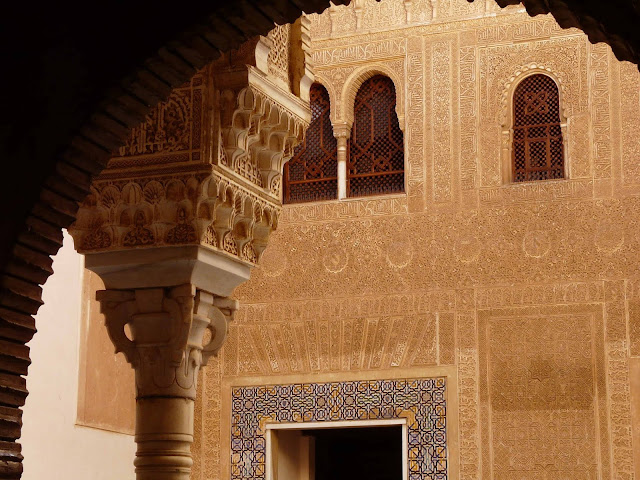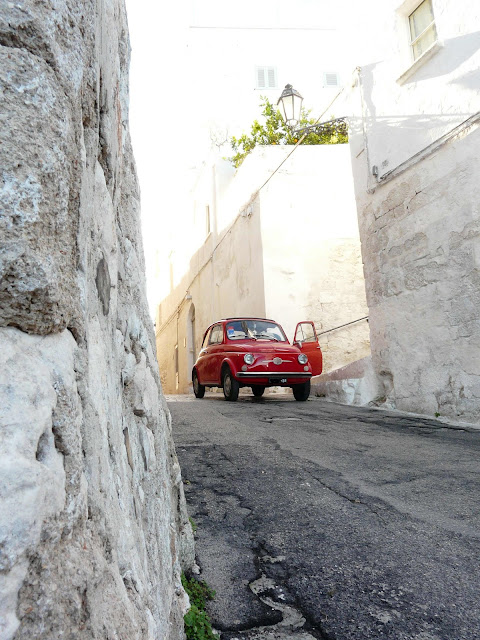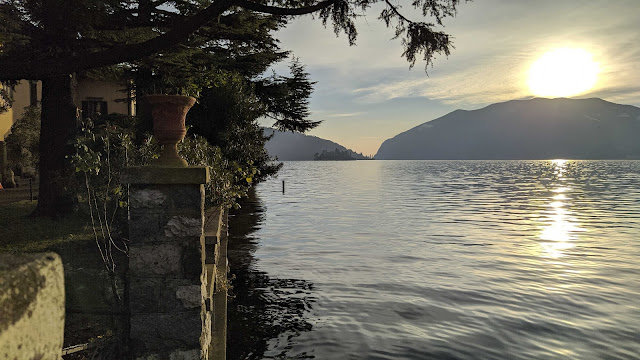Salento in October - Ugento and Casarano
The day before was a fantastic day but also quite tiring. We decide to take it easier the following day and go to Ugento in search of the market to stock up on fruit and veg. Our host sends us to the wrong place (ask the locals!) because the market moved a year ago, but we find it, and an elderly couple selling their own produce, and buy puntarelle, green beans, grapes and aubergines. Andrea also gets some prickly pears from a greengrocers.
Once that is all safely in the car parked in the shade, we walk to the historical centre of Ugento to have a look. The main square has the main church with its unlikely columns and the archeological museum is closed until the afternoon. We wander a little but there isn’t much to see so go back to base for lunch, washing machine and other things that have to be done.
After a rest, which isn’t particularly restful because it’s quite cold in the accommodation, we drive to Casarano, ending up in the historical centre by car by mistake, I take a wrong turn, we bicker a bit and eventually park not far from the church we’ve booked to visit at 4.30. With that settled we walk back to the historical centre. There’s a sort of L-shaped square with the church, a column and some palazzi not just in sandstone but also in pale or deep pink and it’s really rather nice.On the way back to the car we stop at a very nice Martinucci which re-reconciles us with Martinucci in general – the barman smiles at us and cuts our pasticiotto in half without being asked, the Espressini are fantastic and the toilet area décor must be one of the best I’ve ever seen anywhere including some v.g. Wetherspoons in the UK.
We are back at the 6th century Santa Maria della Croce di Casaranello church about ten minutes before the appointment we booked that morning for the guided visit. But there’s already a guided visit going on, so we aren’t quite sure what to do. Join in and listen? From the faces of a few of the people and the way a lady goes to sink down in one of the pews it has been going on for some time. Nobody takes any notice of us or another two people who arrive for the 4.30 slot.
The Church of Santa Maria della Croce is another example of early Christian architecture with 6th-century polychrome mosaics featuring a peacock tail motif, plants and animals and stars on a blue background in the presbytery and Byzantine-era frescoes. The earliest frescos, which date back to the 10th - 11th century (Middle Byzantine period), are those on the pillars depicting the Virgin with Child, Saint Barbara, and other saints and a knight. In the barrel vault of the central nave there are Gothic frescoes from the 13th century depicting scenes from the life of Saint Catherine of Alexandria and Saint Margaret of Antioch.















Comments
Post a Comment